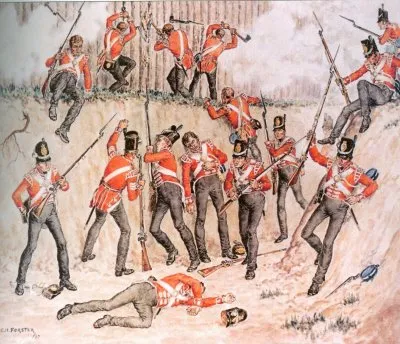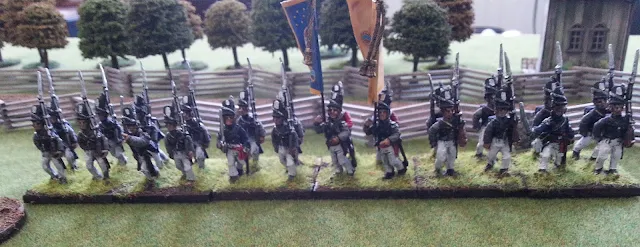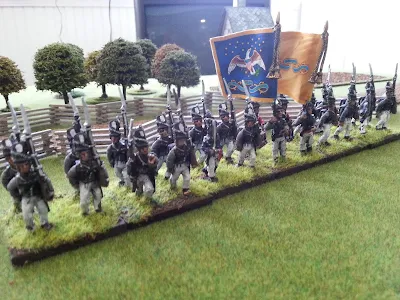For my Rev War gaming I have been using these rules since they came out in the 1980's. Written by Andy Callen they appeared in the first issue of Wargamers Illustrated and are now available throughout the internet on various sites for free.
What attracted me to the rules when they came out were the at that time ground breaking use of disorganization points or DP. This represented temporary problems with the battalion or regiment. The number of DP's effect combat and firing and too many would cause your unit to disappear from the board. Better trained units could remove DP's quicker, while poor units needed brigade or higher commanders to help out. DP's cause you to loose a die for firing, and negative for combat. Get too many (maximum of five per unit) and additional DP's cause casualties which means you remove whole stands. I like this since units stay on the table longer, and you can pull back a unit and redress ranks and return it to the fight.
Games run like this. Start of the turn you have retreats and rallies from end of last turn. You adjust morale for units effected. Again better trained units weather misfortune, lower grade units can fall apart. Commanders ride about trying to help out regiments in trouble (remove DP or inspire by adding +1 to die roll).
Next is small arm and artillery firing. Units can either fire or move but not both, unless they are skirmishes. So you have to plan accordingly. Infantry throw a d6 per stand of three figures. Hits are a 6 on your die roll, which cause a DP. Fire at skirmishers or troops undercover and you half your total of dice thrown. Remember this is long range musket and rifle fire. Artillery is a little harder with plus and minus to roll for a hit.
Next is movement. Units throw average dice to move. A house rule I use is regiments must move full die roll, unless you point out a terrain objective like a hill or fence to stop at. In addition another house rule let's units within a brigade roll once for each unit. Skirmishes can fire and move, regular infantry either fire or move. Slippery fellows those skirmishers.
If regiments move to within 4 inches of an enemy they are in close combat. This represents close range fire and closing to melee. Both units roll die, add modifiers and compare difference in scores. Close combat can be deadly. Evan combats grind up units, while better regiments rout poorer regiments with disastrous results for friends around them.
One part of close combat that confused players is the British getting +2 for bayonet charge while Americans do not get this. This represents the British standard tactic of charging Americans without firing first. For a better explanation please read With Zeal and Bayonets by Matthew Spring. I like this as it represents the British standard operating procedure. But, if not carefully managed you get no better then a stand off result which causes a second round of fighting and the British now get two DP's so are fighting at a disadvantage. Basically the Americans were not impressed, stood their ground and shot you up as you came in. Lesson to learn is use this against a wavering line.
I have recently modified the rules for use with 25mms figures and also for the War of 1812. There is also a link to bring you to one of the many sites where you can down load an original set of the rules

















































